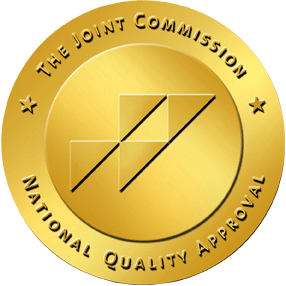Emotions drive our thoughts, actions, and overall well-being. Whether you’re feeling anxious, sad, or overwhelmed, knowing how to effectively regulate your emotions can make a significant difference in how you navigate everyday life. This is especially crucial when you’re in recovery and learning how to manage difficult emotions without turning to substances. Let’s explore what emotional regulation is, why it matters, and practical strategies you can start using today.
What Is Emotional Regulation?
Emotional regulation refers to the ability to manage and respond to emotional experiences in a way that is healthy and appropriate to the situation. It’s not about suppressing or ignoring your feelings. Instead, emotional regulation involves:
- Recognizing emotional triggers and responses.
- Understanding the sources of your emotions.
- Adapting your behavior and thoughts to maintain emotional balance.
When you’re able to regulate emotions effectively, you’re better equipped to handle stress, maintain healthy relationships, and make constructive decisions under pressure.
Why Emotional Regulation Matters
There are a number of reasons why emotional regulation matters in everyday life. First, it enhances your relationships because you’re able to express your emotions in a balanced way. This prevents you from lashing out or withdrawing from people close to you. Second, emotional regulation improves mental health. When you have healthy ways to cope, it reduces the risk of anxiety, depression, and other stress-related disorders.
Third, regulated emotions make it easier to think clearly, leading to more thoughtful and less impulsive choices. Lastly, by managing emotions well, you can bounce back faster from setbacks or challenging life events. Overall, your life is happier, healthier, and less stressful when you’re able to regulate your emotions and take care of your immediate needs.
Key Emotional Regulation Strategies
Practice Mindful Breathing
Mindful breathing reduces the body’s stress response by activating the parasympathetic nervous system, which helps you feel calmer and more centered.
How to Do It:
- Close your eyes and inhale deeply through your nose for a count of four.
- Hold your breath for a moment, then slowly exhale through your mouth for a count of four.
- Repeat several times, paying close attention to how the air feels entering and leaving your body.
Label and Acknowledge Your Emotions
By labeling the emotion (e.g., “I feel anxious,” “I’m frustrated,” “I’m disappointed”), you create a mental distance that allows you to observe it rather than be overwhelmed by it. Research suggests that simply naming an emotion can reduce its intensity.
How to Do It:
- Take a moment to pause and reflect on the physical sensations and thoughts you’re having.
- Assign a name to your emotion without judgment—simply acknowledge it.
- Remind yourself that it’s okay to feel this way, and that emotions naturally come and go.
Use Cognitive Reframing
Changing negative or distorted thinking patterns reduces emotional distress and promotes problem-solving. In essence, you’re changing your perspective while validating your emotions and showing yourself compassion.
How to Do It:
- Identify the Thought: Recognize negative or unhelpful thoughts that are fueling your emotional distress (e.g., “I always fail at everything.”).
- Evaluate the Evidence: Ask yourself if this thought is entirely accurate. Are you truly failing at everything or is this an overgeneralization?
- Replace with a Balanced Thought: Shift to a more realistic thought, such as “I may not succeed at everything, but I do well in many areas, and mistakes are part of learning.”
Develop Healthy Outlets for Stress
Healthy outlets can distract you from overwhelming feelings, give you a sense of accomplishment, and foster emotional resilience. This is why it’s important to have healthy activities in your life.
How to Do It:
- Exercise: Go for a run, practice yoga, or dance. Physical activity releases endorphins, which enhance mood.
- Creative Pursuits: Draw, paint, or write to channel emotions productively.
- Social Support: Talk to a trusted friend or join a support group to share your feelings.
Practice Mindfulness or Meditation
Mindfulness is being fully present in the moment without judging your thoughts or feelings as “good” or “bad.” Regular mindfulness practice cultivates self-awareness, helping you recognize early signs of emotional distress and respond more thoughtfully.
How to Do It:
- Choose a Focus: This could be your breath, a candle flame, or even a guided audio meditation.
- Observe Thoughts Non-judgmentally: When your mind wanders (and it will), gently bring your focus back to your point of attention.
- Consistent Routine: Start with a few minutes daily and gradually increase the time.
Seek Professional Help When Needed
Sometimes emotions become overwhelming or tied to deeper issues such as trauma, anxiety disorders, or depression. In these cases, working with a mental health professional—such as a therapist or counselor—provides you with personalized tools and support. Therapies like Cognitive Behavioral Therapy (CBT), Dialectical Behavior Therapy (DBT), or Psychodynamic Therapy can help you build long-term emotional regulation skills.
Putting It All Together
Emotional regulation isn’t about striving for constant happiness or never feeling stressed—emotions are a natural part of life. Rather, it’s about responding to challenging emotions in a way that serves your long-term well-being. Practicing mindful breathing, labeling your emotions, reframing negative thoughts, and seeking healthy outlets for stress all contribute to a more balanced, resilient mindset. And remember, if your emotions ever feel unmanageable, don’t hesitate to reach out for professional support.
Final Thoughts
Mastering emotional regulation takes time, practice, and patience. The more you integrate these strategies into your daily routine, the better prepared you’ll be to handle life’s ups and downs. To start your journey to recovery, contact Pura Vida Recovery today. We don’t just treat substance use disorders; we help clients improve their mental health and resilience so that they’re able to handle stressful situations and uncomfortable emotions as they arise. This reduces their reliance on substances and helps them lead more meaningful, fulfilling lives.





